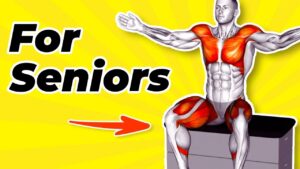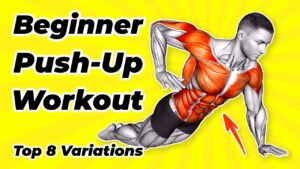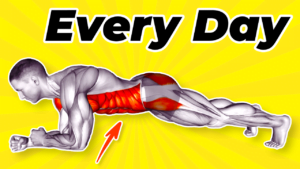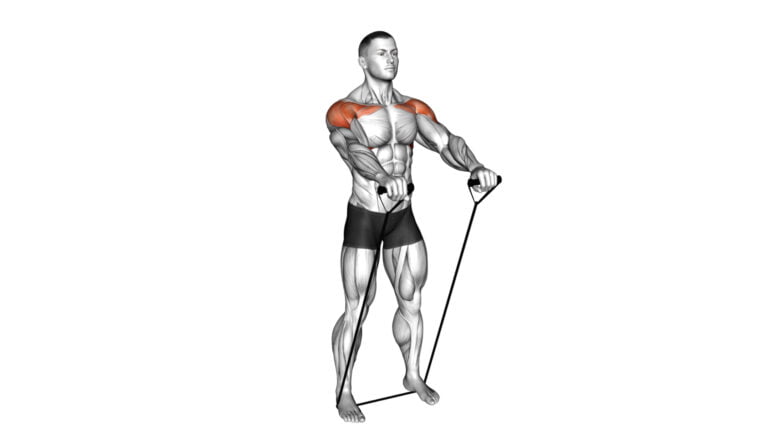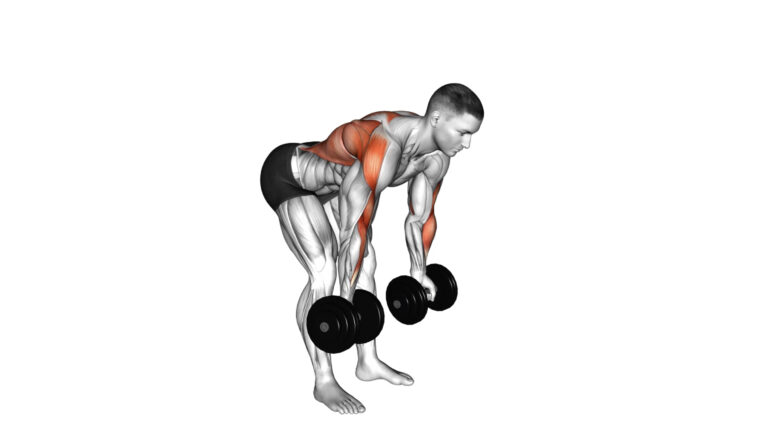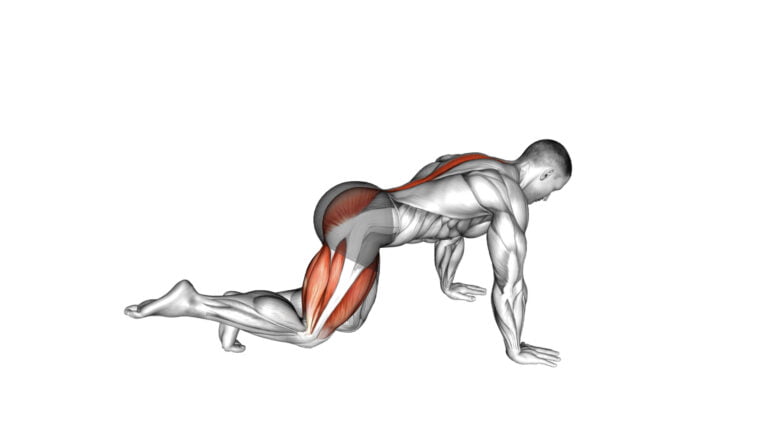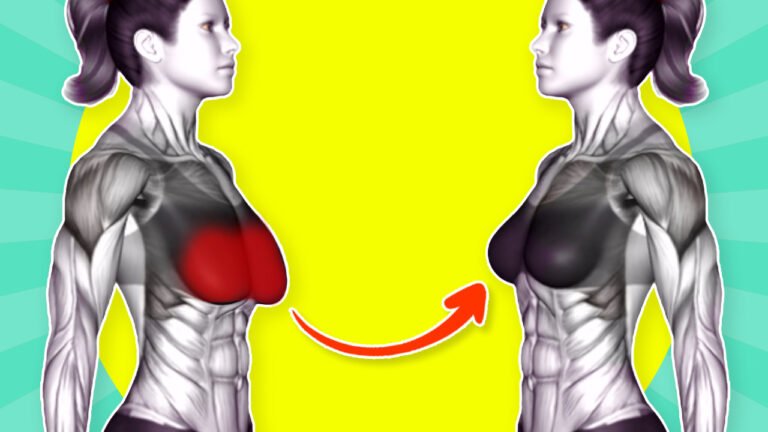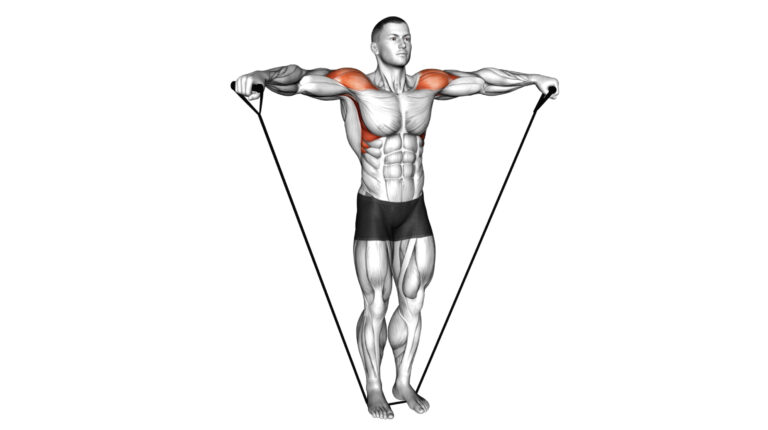From Zero To Fitness: A Step-by-Step Guide On How To Go From Zero Exercise

Starting from zero can feel like facing a giant leap. Yet, the truth is that everyone starts there—at square one. The key to unlocking your fitness journey lies not in extreme measures but in taking those first small, decisive steps toward change.
This guide shines a light on how you can transition from no exercise to incorporating regular physical activity into your life. It’s tailored for beginners and promises practical insights that will turn daunting beginnings into achievable milestones.
Serg Bayracny, our guide through this process, brings a wealth of experience to the table. With over ten years in personal training coupled with academic achievements in Physical Education and Sports Management, Serg knows exactly what it takes to start—and sustain—a fitness regimen from scratch.

He believes in making fitness accessible and enjoyable for everyone, regardless of their starting point or past experiences with exercise. Ready to make a change? Let’s begin.
Key Takeaways
- Starting exercise is simpler than it seems and can greatly improve both your physical and mental health. Exercising makes your heart healthier, builds muscle strength, helps weight loss, increases energy, and boosts mood.
- Before beginning any new workout routine, see a doctor to make sure the exercises fit your health needs. Then set clear goals for yourself and slowly increase the difficulty of workouts to avoid injuries.
- Mixing different types of exercises like cardio, strength training, stretching, and HIIT keeps workouts interesting and effective. This variety ensures all parts of the body get attention.
- Tracking your progress through journals or apps motivates you to keep going by showing how much you improve over time. Setting small rewards for reaching fitness milestones also helps in staying motivated.
- Managing stress through mindful activities such as yoga or meditation alongside regular exercise enhances overall wellbeing. Remembering to eat well, stay hydrated, warm up before exercising and cool down afterward supports your fitness journey.
Benefits of Exercise for Beginners
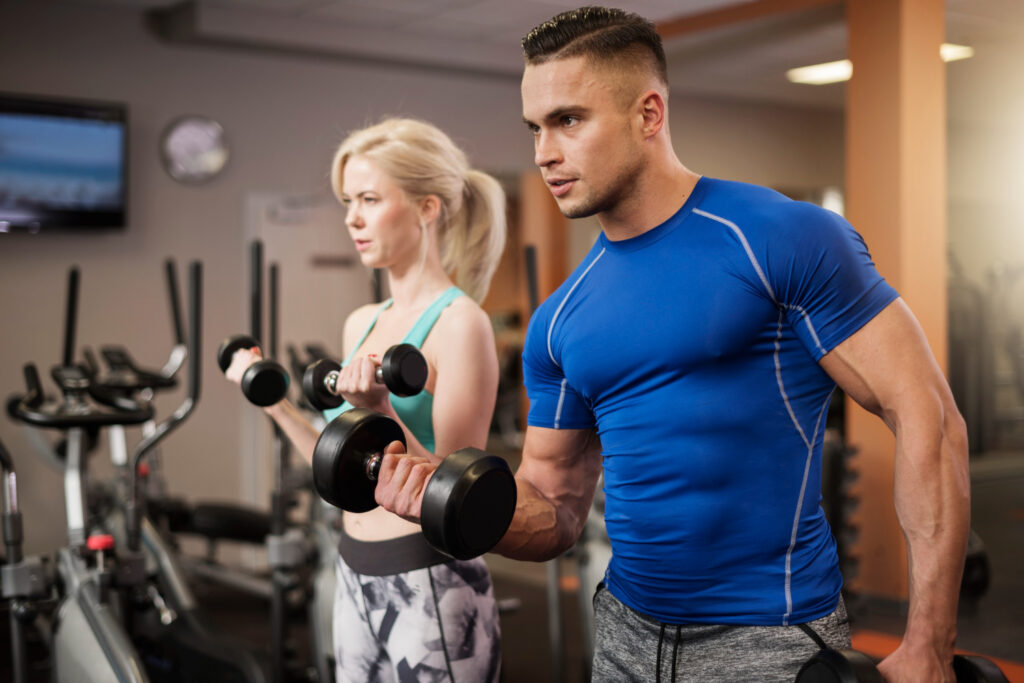
Starting to exercise can change your life. It makes you strong and helps calm your mind.
Physical health benefits
Exercising boosts your heart health and lowers the risk of diseases like diabetes and high blood pressure. Lifting weights, doing push-ups, or even swimming can make your muscles stronger.
I’ve seen folks start with basic strength exercises and watch their bodies change. It’s not just about looking good; it feels amazing to see your endurance go up.
Regular workouts help you lose weight too. By mixing cardio workouts with resistance training, such as using weights or doing squats, you burn fat while building muscle. Trust me, there’s nothing quite like the feeling of hitting a new personal best in the gym or out on the track.
Plus, stretching keeps your body flexible and prevents soreness after a hard workout session.
Mental health benefits
Exercise does wonders for your mind, just like it does for your body. Working out can help reduce stress and lift your mood. I’ve seen it myself. After a good session of weightlifting or high-intensity interval training, I feel calmer and happier.
It’s like all the worries of the day melt away with each rep and every drop of sweat.
This boost to mental health isn’t magic. Science backs it up. Physical activity releases chemicals in your brain that act as natural painkillers and mood elevators. Plus, achieving fitness goals builds self-confidence and reduces feelings tied to depression and anxiety.
So, hitting the gym not only makes you stronger on the outside but also more resilient on the inside.
Increased energy and stamina
Moving from mental perks to the physical, getting more energy and staying strong for longer stand out. Working out makes your body stronger. When I first started lifting weights and doing cardio, I noticed changes.
My muscles could handle more, and I wasn’t as worn out after a workout or during my day.
Starting with simple exercises like pushups and moving to tougher ones like weight training boosts not only muscle power but also how long you can keep going without getting tired.
This change didn’t happen overnight for me. It took regular effort, but it was worth it. Now, even on long days or when challenges come up at the gym, I have the stamina to push through thanks to building a routine that included both strength workouts and things like running on an elliptical trainer.
How to Start Exercising: A Beginner’s Guide

Starting exercise can seem big, but it’s truly simple. First up, figure out how to go from zero exercise to moving your body in ways you enjoy.
Check your health
Seeing a health professional before you start any new fitness routine is smart. This step ensures your body is ready for the exercise you plan to do. During a medical examination, the doctor can spot any issues that might make working out risky for you.
They can also give advice on what kinds of physical activities are best for your health goals and current condition.
I once had to adjust my own workout plan after a checkup showed I needed more flexibility work in my routine. It was eye-opening—proof that even if you think you’re in top shape, there’s always room to tweak things for better results.
“A good workout plan starts with understanding your body.”
Make a plan and set realistic goals
To start, making a plan is key. Think about what you want to achieve in personal fitness. Set goals that are clear and doable. Say you’re new to lifting weights – don’t aim for the heaviest barbell right away.
Begin with lighter weights and increase slowly. This keeps you safe and improves your strength over time.
Next, track your progress with a journal or an app. Write down your workouts, the number of reps, and how much weight you lift each session. This helps see how far you’ve come. Also, setting deadlines can motivate you to keep going strong.
Now it’s time to make exercise a daily habit…
Make it a habit
Making exercise a daily routine takes more than just willpower. It’s about setting small goals and hitting them, day by day. As a bodybuilder, I learned this the hard way. At first, I’d skip sessions because my mind would trick me into thinking one missed workout didn’t matter.
But it does. To make fitness stick, I tied my gym time to another daily activity—like right after waking up or before dinner. Soon, hitting the gym became as normal as brushing my teeth.
Sticking to this habit meant using tools like calendars for planning workouts and apps to track progress. They weren’t just tools; they became my partners in reaching fitness goals.
Rewards played a big part too—not with food but with things that fed my motivation like new gym gear or shoes for every milestone reached in strength training or repetitions done without giving up on those tough cardio medleys at an aerobic pace.
This approach turned what could feel like chores into wins I looked forward to every day.
A 6-Week Exercise Program for Beginners

Starting exercise can be tough, but our 6-Week Exercise Plan makes it easy to learn how to go from zero exercise. Get ready for a mix of cardio like running and biking, muscle work with weights, and stretching moves for flexibility.
Keep track of what you do and treat yourself when you hit goals. Also, don’t forget to manage stress along the way. This plan is your first step towards a healthier life—dive in!
Focus on intensity monitoring
Keep an eye on how hard you work out. It’s key in a 6-week program for beginners, especially if you’re lifting weights or doing cardio. Tools like heart rate monitors can help. They show if you’re pushing too hard or not enough.
I’ve seen many gym-goers, eager to see fast results, push their limits too soon and get hurt. So, start slow and up the intensity as your body gets used to it.
“Too much too soon is a recipe for injury.”
Listen to your body—it’s smarter than you might think! If lifting feels too easy, add more weight carefully. If running leaves you gasping for breath, slow down a bit next time. Balancing effort with safety helps build stamina without risks.
Incorporate cardio, strength, and stretching
Starting your fitness journey means mixing different types of exercises. You need cardio, muscle-building, and stretching for a full workout. Here’s how to blend them all:
- Begin with aerobic exercises. Think about jogging, swimming, or using cardio machines at the gym. These activities get your heart rate up and improve lung power. In my early days, I found that morning jogs set a positive tone for my entire day.
- Add resistance workouts next. Use weights or your body weight to make muscles stronger. Exercises like push-ups, squats, and lifting weights are key. They help build muscle which burns more calories even when you’re not working out.
- Don’t skip on core – strengthening moves. These are crucial for overall strength and stability. Planks and pilates focus on this area and protect you from injuries.
- Stretching comes last but it’s just as important. After your muscles are warmed up, stretch them out to prevent soreness and keep flexibility up.
- Mix in some HIIT sessions too – High-Intensity Interval Training.
This type combines short bursts of intense exercise with periods of rest or lower intensity movements. - Remember to cool down after every workout session with gentle stretches or a slow walk to bring your heart rate back down.
- Using tools like resistance bands can add variety to your routine and target different muscle groups effectively.
- Enroll in classes that interest you – maybe boot camps or yoga – for both motivation and technique guidance.
- , Track your progress with apps or a journal; seeing improvements motivates you to stick with it.
- , Listen closely to what your body needs – rest days are just as vital as workout days for recovery.
By weaving these elements into my regimen early on, I built a well-rounded routine that kept me engaged and showed real results over time.
Track progress

Keeping an eye on your progress helps a lot. I use a simple journal to write down what exercises I did, how many repetitions, and how I felt. This way, it’s easy to see improvement over time.
Some prefer apps that track workouts and show graphs of strength gains or weight loss. Both methods work great for staying motivated.
Next, giving yourself rewards is key. After reaching a goal, like lifting heavier weights or running longer distances, treat yourself. It could be new workout gear or a day off to relax.
Celebrating these wins makes the hard work worth it and pushes you to set new goals.
Reward yourself
Treat yourself after hitting your workout goals. This can be anything from new gym clothes to taking a day off for rest. Make sure these rewards help you feel good and push you to keep going.
It’s like giving yourself a high-five for the hard work.
Start small with rewards, maybe a new water bottle or extra TV time at night. As you hit bigger milestones, think about bigger treats like a massage or new headphones for the gym. This keeps things fun and gives you something great to look forward to.
Manage stress
After treating yourself, it’s vital to tackle stress head-on. Stress can undo your workout gains faster than you think. I’ve seen many bodybuilders struggle because they ignored their mental health.
Exercise itself lowers stress, but adding mindfulness and deep breathing helps even more. Picture taking a break in the middle of your day for some quiet time or meditation. This isn’t just relaxation – it’s a tool that sharpens your focus and keeps cortisol, the stress hormone, in check.
I often recommend yoga to my trainees. It might seem slow compared to lifting weights or doing sprints, but it’s powerful for managing stress and improving flexibility. Another trick is keeping a diary about what stresses you out and how you deal with it.
Seeing patterns helps you find better ways to cope before things spiral out of control. Plus, talking with friends or a counselor makes handling tough times easier—never underestimate the power of sharing your troubles.
Tips for Staying Motivated and Making Exercise a Sustainable Habit
Keeping up your drive and turning workouts into a lasting habit starts with good food, water, a solid plan for both starting and finishing your exercise, paying attention to what your body tells you, finding friends or groups who push you forward, and sticking to it.
To learn how to go from zero exercise to making fitness a part of your life, read on!
Hydrate and eat well
 Drinking enough water and eating right are key for bodybuilders. Your body needs water to work well. It helps with digestion, keeps your joints moving easily, and helps muscles recover from workouts.
Drinking enough water and eating right are key for bodybuilders. Your body needs water to work well. It helps with digestion, keeps your joints moving easily, and helps muscles recover from workouts.
Aim for 8-10 glasses a day—more if you sweat a lot during exercise. Eat foods that give you energy and build muscle, like lean meats, whole grains, fruits, and veggies. Foods rich in carbs help refill your energy stores after tough workouts.
Make sure to mix protein into your meals too. Protein is what your body uses to fix and grow muscles after lifting weights or doing cardio activities. Think of chicken breast, fish like salmon or tuna packed in water., eggs,,and plant-based options like beans or lentils.
Also include healthy fats found in nuts,, avocado,,and olive oil for overall health. This balance keeps you strong and ready for the next workout session without feeling tired or sore all the time.
Warm-up and cool down
Starting your workout with a warm-up gets your body ready. It makes your muscles loose and ready for heavy lifting or intense moves. A good warm-up includes light cardio like jogging in place or jumping jacks.
This step raises your heart rate slowly. After exercising, cooling down is key to help your body recover. Gentle stretches do the job well, letting your heart rate return to normal gently.
Cooling down also uses less glycogen, which feeds your muscles during workouts. Stretching helps avoid tight muscles later on. Now, keeping hydrated throughout is crucial for top-notch performance and recovery after tough sessions.
Listen to your body
After warming up and cooling down, paying attention to what your body tells you is crucial. Your muscles may feel sore after working out. This is normal. But if you feel pain, stop.
Pain is your body’s way of saying something might be wrong. It’s like your car’s dashboard lights warning you to check the engine.
I learned the hard way that ignoring pain can lead to injuries. Once, I pushed through shoulder discomfort thinking it would get better. It didn’t. I ended up having to take a break from lifting weights for weeks! So, listen closely and act on any warnings your body gives you.
“Your body speaks—learn its language.”
Find motivation and accountability
Keeping up your drive to exercise starts with finding the right push and people who make sure you stick to it. Pair up with a workout buddy, like someone from the gym or even a friend who shares your fitness goals.
This way, you two can keep an eye on each other’s progress and lend support when the going gets tough. There’s also the option of joining online groups where members cheer each other on and share tips.
Consider hiring a personal coach if you want an extra push. They not only craft custom workouts but also hold you accountable for meeting your targets. Apps can help too! Many offer reminders for your workout sessions and track how well you’re doing.
Next up, let’s dive into making sure you hydrate well and eat right to power through those exercises.
Consistency is key
To stick to your workout routine, doing it often is a must. This builds habits that last. Think of training like saving money. Small daily deposits grow over time into something big.
Just like I found, hitting the gym regularly, not just when feeling up to it, means steadier progress.
Every day you choose to exercise, you’re one step closer to your goals. Whether lifting weights or running on the treadmill, what matters is showing up and putting in work consistently.
Now let’s talk about how staying hydrated and eating right fuel this journey further.
Conclusion
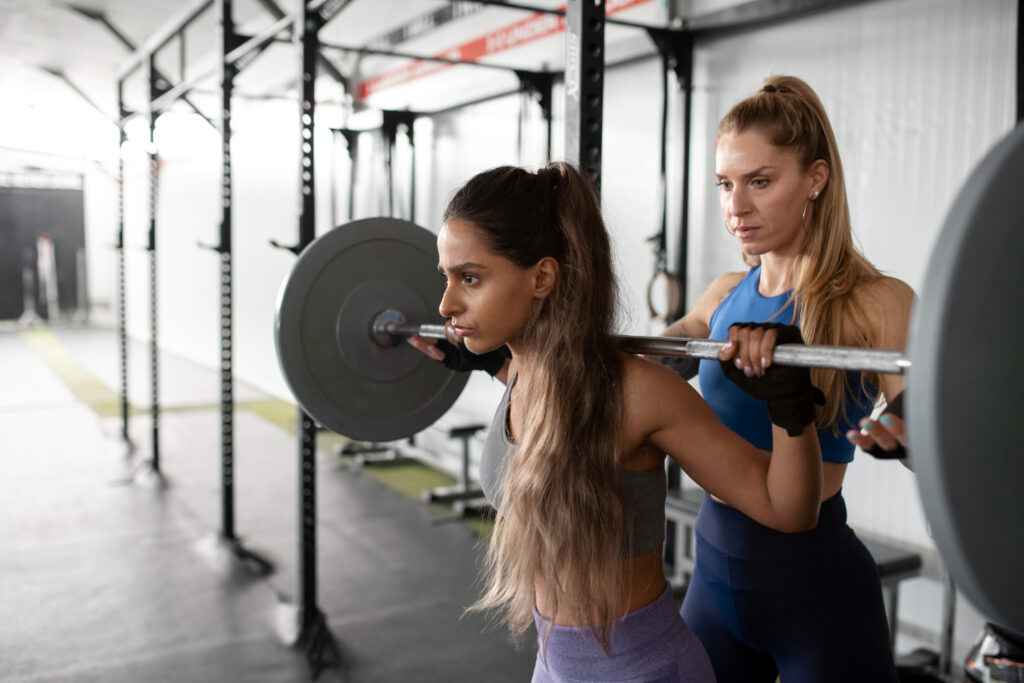
Starting to exercise brings big perks for your body and mind. We showed you how, with small steps, anyone can boost their energy and feel stronger. Easy plans and goals make getting fit doable.
Our six-week guide mixes up exercises like running, lifting weights, and stretching out muscles to keep things interesting—making sure you see progress keeps you going strong. Remember, eating right and staying hydrated helps too—how to go from zero exercise is not just about moving more but also looking after yourself in every way.
Now’s the time; grab those sneakers and start your journey to a healthier life!
FAQs
1. How do I start exercising if I’ve never exercised before?
Start slow! Begin with simple exercises like walking or calisthenics. Warm up before and cool down after your workout. Remember, hydration is key.
2. What’s the best way to stay motivated?
Find a buddy or join a rescue group with dogs needing walks. Exergames can also make fitness fun. Plus, setting small goals helps a lot!
3. Can exercise help my mind too?
Yes! Exercise boosts mental health by reducing stress and improving mood. Sometimes, talking to a mental health professional can also be beneficial.
4. Should I change what I eat when I start exercising?
Absolutely! A balanced diet fuels your body for workouts and recovery… Think nutrition-rich foods that keep you going strong.
5. Do I need special equipment to get fit?
Not really… You can do plenty of resistance exercises or aerobics without any gear… But having comfy shoes and bras makes things easier!
6. Is it okay to ask for help if I’m struggling?
Definitely! Personal trainers or even healthcare providers can offer guidance tailored just for you… They’ll make sure you’re on the right track.

Author
Years ago, the spark of my life’s passion ignited in my mind the moment I stepped into the local gym for the first time. The inaugural bead of perspiration, the initial endeavor, the very first surge of endorphins, and a sense of pride that washed over me post-workout marked the beginning of my deep-seated interest in strength sports, fitness, and sports nutrition. This very curiosity blossomed rapidly into a profound fascination, propelling me to earn a Master’s degree in Physical Education from the Academy of Physical Education in Krakow, followed by a Sports Manager diploma from the Jagiellonian University. My journey of growth led me to gain more specialized qualifications, such as being a certified personal trainer with a focus on sports dietetics, a lifeguard, and an instructor for wellness and corrective gymnastics. Theoretical knowledge paired seamlessly with practical experience, reinforcing my belief that the transformation of individuals under my guidance was also a reflection of my personal growth. This belief holds true even today. Each day, I strive to push the boundaries and explore new realms. These realms gently elevate me to greater heights. The unique combination of passion for my field and the continuous quest for growth fuels my drive to break new ground.





